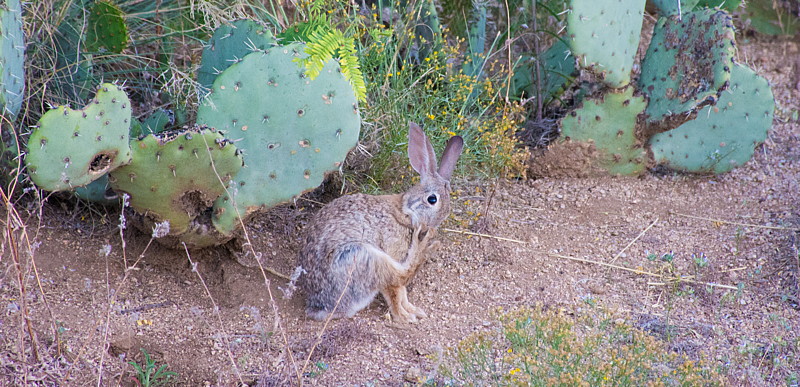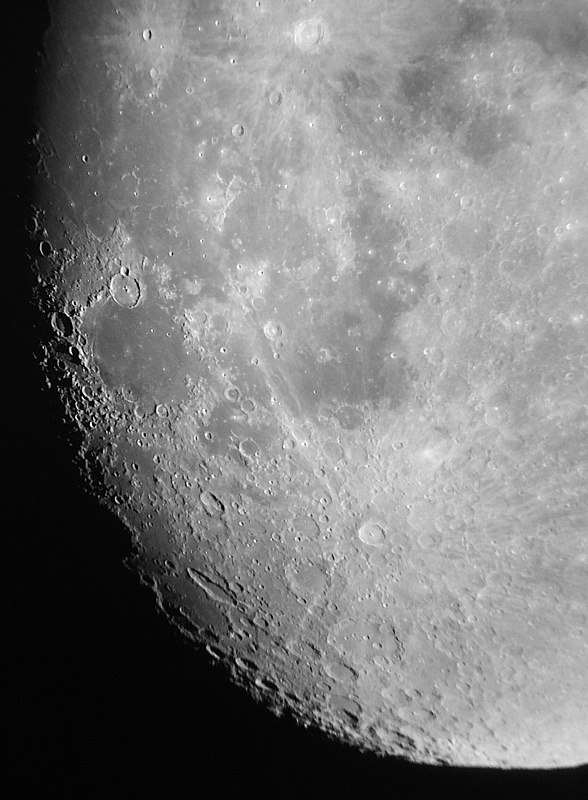Three Moons in a POD
Posted: 30 May 2015
|
Open: Friday, 29 May 2015, 1812 MST Temperature: 88°F |
Session: 828 Conditions: Clear |
1822 MST: viewed Venus, then Jupiter, 83X. Slewed to the waxing gibbous Moon for some extended viewing, 83X. This is how the Moon appeared in the 2" 24mm UWA eyepiece (83X) as photographed using a handheld iPhone 5s one hour before sunset:

1900 MST: switched to using the William Optics Binoviewers at 100X on the 8" LX200-ACF for lunar observing. Southern region presented nice views.
Had another visitor:

1927 MST: sunset. There were some excellent views of the Moon using the Binoviewers at 100X. Here are two handheld iPhone afocal photos (slightly cropped):


1939 MST: quick look at Jupiter, Binoviewers 100X. The four Galilean Moons were visible. Then went back to the Moon. Lots of fascinating sights seen.
1957 MST: saw the first Kissing Bug of the season. Normally they would have appeared around mid-May but most of this month of May had been cooler than normal, which delayed their appearance. He flew away before I could deal with him.
2002 MST: seeing at the Moon had slightly deteriorated. Added the f/6.3 focal reducer to the telescope. Had to use a 1.25" star diagonal in order to focus using the Binoviewers with its 20mm eyepieces. Began preparing to photograph the Moon projected onto the SkyShed POD dome. Mounted the D7200 DSLR on a photographic tripod on the observatory patio.
2031 MST: three Moons, two from the Binoviewers and one from the finderscope, f/3.5, 20 seconds, ISO 1600, FL 18mm:

Click or tap on image for larger version
The Little Dipper (Ursa Minor) is visible above the dome in the photo above.
I switched to a FL 8mm 180° Fisheye Lens. I also removed the Binoviewers and focal reducer and switched to the 24mm eyepiece on the telescope. These photos show two Moons on the dome, stars, and some planets, and were taken at f/5, 15 seconds, ISO 1600, FL 8mm. Mouseover or tap on the images to see labels.

Mouseover or tap on image for labels

Mouseover or tap on image for labels
Larger versions of the two photos can be seen by clicking these thumbnails:


2053 MST: saw a Kissing Bug again on the dome. Photo with the D7200 DSLR:

Kissing Bugs are one inch long and are blood suckers. They inject an anesthetic to numb the site of their bite and will then suck your blood for up to 15 minutes. They can cause "chagas disease", which can be very serious. I do not like Kissing Bugs. Fortunately, they only appear for 2-3 weeks in May-June here in southern Arizona. I terminated this night's visitor.
2132 MST: final look at the Moon, 83X.
|
Close: Friday, 29 May 2015, 2140 MST Temperature: 73°F |
|
Comments are welcome using Email. If you are on Twitter you can use the button below to tweet this report to your followers. Thanks.
Cassiopeia Observatory Home Page
Copyright ©2015 Michael L. Weasner / mweasner@me.com
URL = http://www.weasner.com/co/Reports/2015/05/30/index.html
